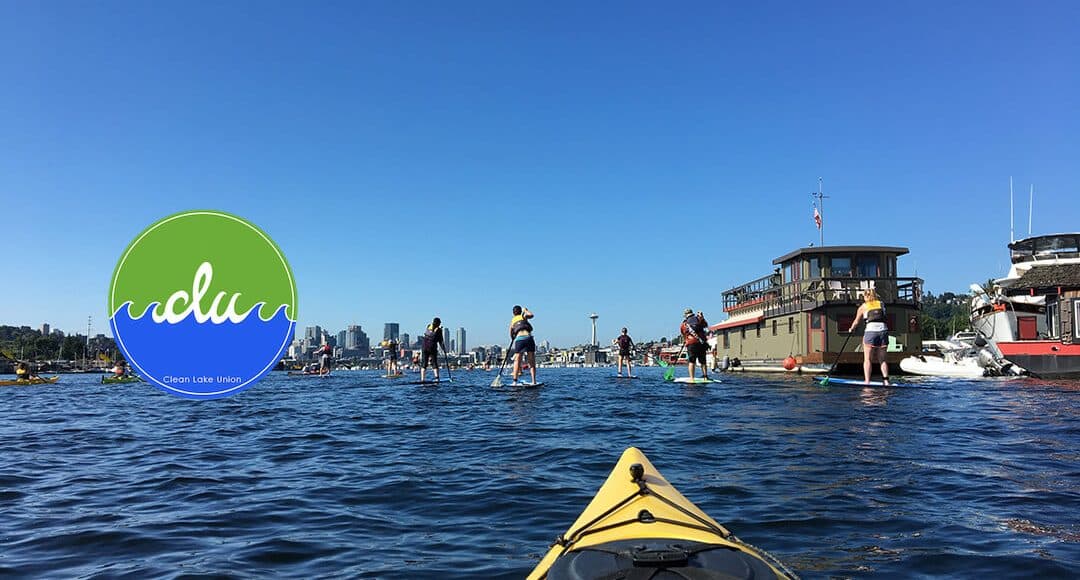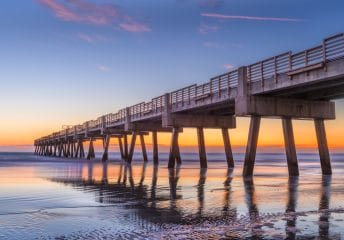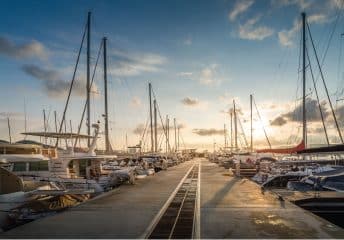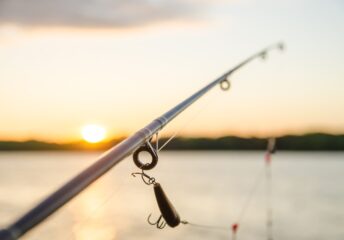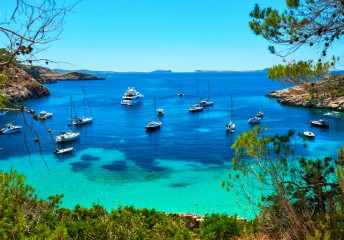Clean Lake Union: Practical, Natural Solutions | #MindYourWake Series
Last Updated on July 29, 2022 by Boatsetter Team
Mark Grey was sitting in his office in Seattle when he saw something in the water in the marina right outside his window. It was an oil slick.
“We really panicked, thinking it was a boat losing its fuel,” he remembers. Since his company manages the marina on Lake Union, he and his partners ran out the door. To their great surprise, however, the slick wasn’t from a yacht. It was from a catch basin in a parking lot adjacent to the lake. A pipe was sending street runoff and storm drain water straight into Lake Union, untreated.
“That was my ‘aha’ moment,” Grey says. Being in the building and development business, he thought, “Is there something we can do about this?”
That question was the genesis of what shortly thereafter became Clean Lake Union.
Learn more about Boatsetter’s #MindYourWake sustainability initiatives.
What is Clean Lake Union?
Fast forward a decade, and Clean Lake Union is successfully identifying locations for and funding installations of bio swales at catch basins around Lake Union and Lake Washington. Bio swales—also called bioretention swales—are shallow, landscaped channels with sloped sides to capture, treat, and filter water runoff as it moves downstream. Clean Lake Union meets with success by collaborating with commercial land owners, developers, and the local government. Simultaneously, it’s raising public awareness of the importance of keeping the Emerald City’s waters clean.
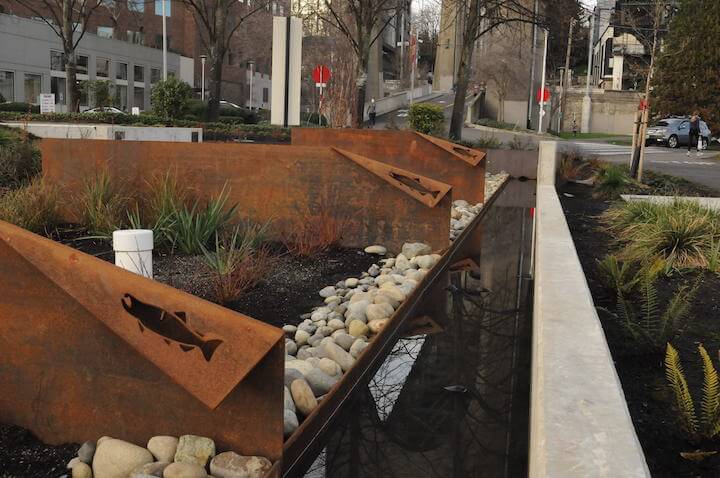
A Seattle native, further raising his family in Seattle, Grey knew back in 2012 that the city had been growing and changing tremendously.
“I guess I always thought there was some fancy filtration system that would prevent this from happening,” he says. “The answer is no. Seattle has a really old plumbing system, if you will.”
Specifically, he continues, it has dedicated plumbing for stormwater, a separate one for sewage, and yet further plumbing for a combination of the two. Despite the increase in development and corresponding increase in sewage, “we haven’t changed that system in the ground,” Grey notes. “It’s been in the ground for decades and decades.” Therefore, he says, the system can’t handle it, and overflow from the combination pipes pours into the lakes.
Clean Lake Union’s Projects
Clean Lake Union’s first opportunity to make a difference came with a building Grey’s company was developing alongside the Aurora Bridge. The historic bridge, passing over part of Lake Union, was contributing to a deadly problem. A friend sent Grey a video of Jennifer McIntyre, a professor at Washington State University, showing how bridge stormwater runoff killed migrating juvenile salmon “within minutes” of passing by the outflow pipe. It disturbed him to see water akin to black coffee, “a toxic soup,” pouring into the narrow cut of the lake. McIntyre also had research proving that “greening” the infrastructure would reverse the damage.
Grey’s company, therefore, designed a series of bio swales, one leading into the other, as part of its project. It further designed downspout-like structures off the bridge.
- The way they work is simple: Water comes off the bridge via a downspout into one swale, filling it up and then filtering into the next.
- The swales look like unassuming property and neighborhood beautification to the average person walking or biking by.
“Each time, nature is cleaning the water,” Grey explains. By the time the water reaches the last swale, it’s clean enough to go straight into the lake.
This simple solution initially ran into complications, though, due to conflicting jurisdictions. The state of Washington, for instance, controls the bridge. The land, meanwhile, is under Seattle’s control.
“It took a long time. A lot of people said, ‘You can’t take state water and put it on city property privately, clean it, and then discharge it back into our system!’ And we were like, ‘Why not? It’s going to the same place.’ After asking ‘why not?’ a lot, we got everyone nodding their heads.”
Finished in three phases through 2020, the downspouts and bio swales capture and clean an astounding 1.8 million gallons of water annually.
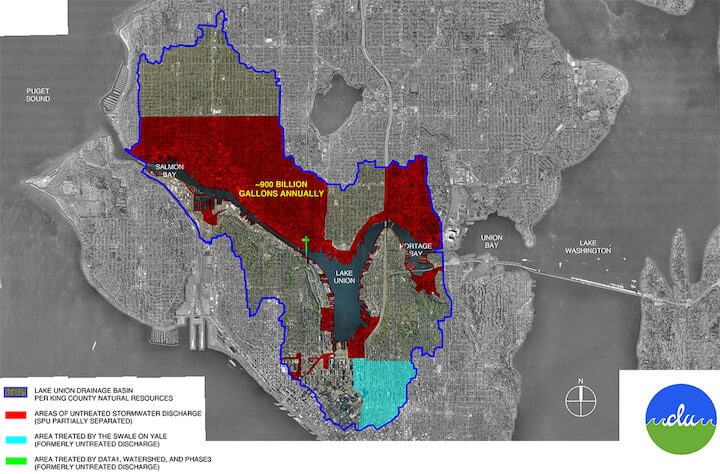
Natural Solutions for Manmade Problems
Clean Lake Union continues to identify areas of improvement around the lakes. It has earned not only the cooperation of the public and private sectors but also fellow non-profit The Nature Conservancy. Additionally, it works with Salmon Safe, one of the nation’s leading ecolabels. Salmon Safe certifies that development projects protect water quality, maintain watershed health, and restore habitat.
Grey is immensely proud that natural solutions are the answers to manmade problems. “What’s so cool about this is that a five-year-old gets it,” he says. “There’s science to it, but nature’s doing its job.”
Ultimately, he believes other communities can help nature do its job, too. “Nationally, the greatest form of flattery would be trying to do the same things,” Grey says. “Look at your heavily trafficked areas,” he encourages. From oil dripping off cars to bridges decaying, all of that ends up in waterways.
“We called it Clean Lake Union, but the overarching umbrella is Clean All Water,” he asserts.
Read other stories within our #MindYourWake Series:
- Green Boating: 6 Sustainable Best Practices for Boaters
- Seabin Project for Cleaner Oceans
- Miami Waterkeeper: Protecting the Water You Love
- Billion Oyster Project: Building Back New York’s Harbors
- Captains for Clean Water: Protecting Aquatic Ecosystems
- The Everglades Foundation: Science First
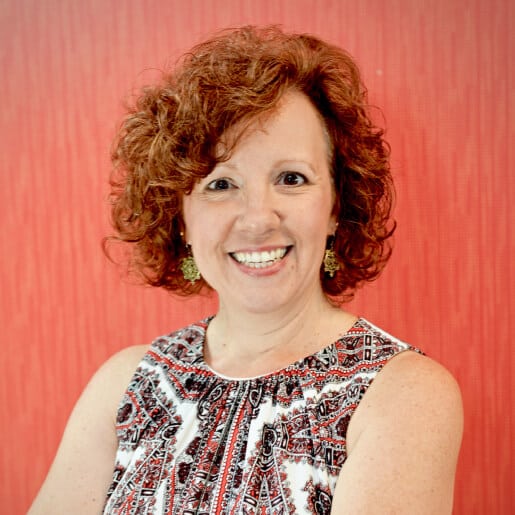
A journalist with more than 30 years’ experience, Diane M. Byrne is the owner
of MegayachtNews.com, a daily website educating American superyacht owners, buyers, and
their circles of influence about the leading builders, designers, cruising destinations, and more.
She founded the website in 2007 as the first, and still the only, American-focused online media
outlet exclusively covering this market. It features all-original content, for real stories of real
interest.
Diane is additionally one of the most-sought-after journalists for expert editorial coverage and
commentary about not only superyachts, but also general boating and yachting. Her byline
appears in Boatsetter.com, DiscoverBoating.com, and the magazines Luxury Guide, Ocean,
Yachting, and Yachts International.
Additionally, Diane is the Chair of the U.S. Superyacht Association, having been on the Board of
Directors since 2015. Outside of yachting, she’s a trustee of Sempre Avanti, a non-profit
resource supporting Italian and Italian-American individuals, businesses, and organizations in the
United States and Italy.
